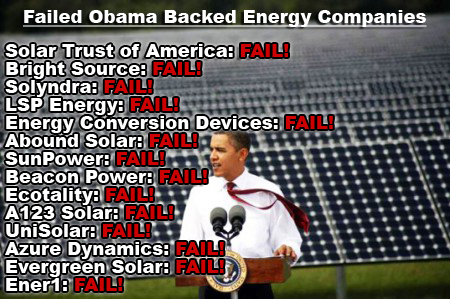
Once the mother lode of Riverside County’s solar gold rush, the stalled, 1,000-megawatt Blythe solar plant east of the Coachella Valley suffered another setback Monday as project developer Solar Trust of America filed for bankruptcy.
The Oakland-based company filed for a Chapter 11 bankruptcy — seeking to restructure its debts — in the U.S. Bankruptcy Court in Delaware, listing assets of up to $10 million and debts of up to $100 million.
The company’s two main assets listed in the filing are the Blythe project and the 500-megawatt Palen solar project, which has awaited final approval from the federal Bureau of Land Management since June. Company officials were not available for comment Monday.
Both are in the Riverside East solar zone — 147,910 acres of public land stretching from Joshua Tree National Park to the city of Blythe, close to Interstate 10 and existing transmission corridors.
The Blythe project broke ground in June with Secretary of the Interior Ken Salazar and California Gov. Jerry Brown both hailing it as the largest solar plant in the world and a major engine for job creation and economic growth.
The solar thermal project would have partially covered 7,030 acres of public land with huge, parabolic solar troughs, creating 1,000 jobs at the peak of construction and powering up to to 300,000 homes.
Blythe City Manager David Lane said residents in the 20,800-population town eight miles east of the project site are taking the bankruptcy in stride.
“It’s a little blip,” he said. “I don’t think people are as disappointed as you might think.
“When you consider the amount of investment in the project and what it’s got going for it, someone is going to build it,” he said.
Monday’s filing adds another bankruptcy to the growing list of firms that have failed in the solar industry shakeout that began last year when Northern California-based panel manufacturer Solyndra closed its doors, defaulting on a $535 million federal loan guarantee.
Like Solyndra, Solar Trust had received a federal loan guarantee, at $2.1billion one of the largest ever given by the Department of Energy.
But Monday’s bankruptcy filing did not mean a default because Solar Trust lost the guarantee when the project was put on hold in August for a change in technology from solar thermal to photovoltaic.
Support lost
According to the narrative laid out in the Solar Trust bankruptcy filing by CEO Edward Kleinschmidt, as a developer, his company depended on its German parent company, Solar Millennium, for operating funds.
When Solar Millennium filed for bankruptcy in Germany in December, it cut off operating funds to Solar Trust and the bills piled up.
A prospective deal to sell Blythe, Palen and a controlling interest in Solar Trust to another German firm, solarhybrid, collapsed in March when solarhybrid also filed for bankruptcy as a result of sharp cuts in German government subsidies for solar.
Kleinschmidt, who took over as Solar Trust’s CEO on Friday, said the decision to file for Chapter 11 came when the company realized it would not be able to pay $1 million in rental fees due to the BLM on April 1.
BLM officials could not comment on the rental fees, but said Monday that, in general, solar developers have to post bonds to cover site restoration in the event of a project failure.
Under the filing, the company will retain the development rights for both projects during the bankruptcy proceeding.
It may be able to obtain some interim financing from NextEra Energy, which owns the two solar projects now under construction in the Riverside East zone, the Genesis project and the Desert Sunlight project, which it owns with GE.
Steve Stengel, a spokesman for NextEra, declined comment Monday.
Southern California Edison, which had negotiated a contract to purchase power from the Blythe project, said the bankruptcy will not affect its strategy for obtaining 33 percent of its power from renewable sources by 2020, as required by state law.
“We procure a high-need case; it presumes a 40 percent failure rate,” said Bill Walsh, Edison’s manager of renewable procurement. “We’ve been planning for that reserve margin. It’s not as big a hit as you think it would be.”
Like Lane, Michael Picker, the governor’s senior advisor on renewable energy facilities, is optimistic about the comeback chances for the Blythe project, noting that financial reversals are the norm for large-scale projects.
“It’s got the land mass for something as big as 1,000 megawatts; it’s got transmission; it’s got permits; and I bet there’s some market for it,” he said. “I would not be surprised to see a couple bidders show up and get under way pretty soon.”







Comments are closed.